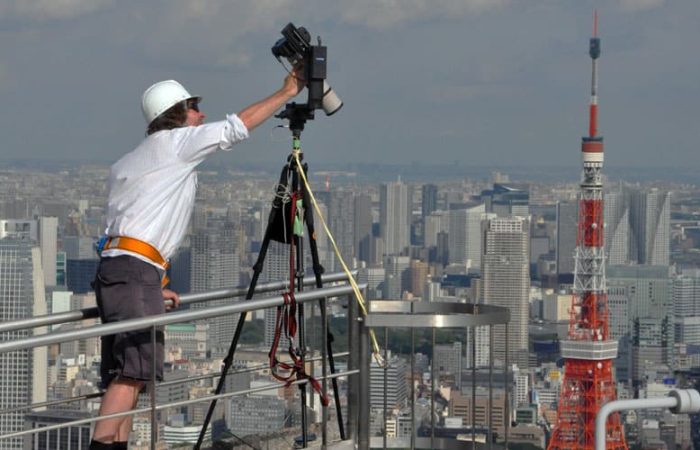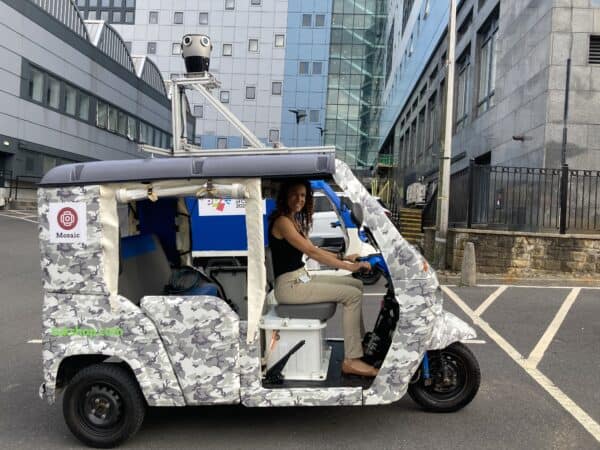“I guess it was in my blood… My dad and grandfather were enthusiastic photographers.”
Jeffrey Martin Mosaic CEO
Jeffrey Martin – Mosaic CEO – states as he reminisces about how he first became involved and eventually fell in love with cameras and photography starting at the age of 8. He recalls his first camera being a disc camera (a flat disc which held fifteen 10x8mm exposures at once, as seen below).
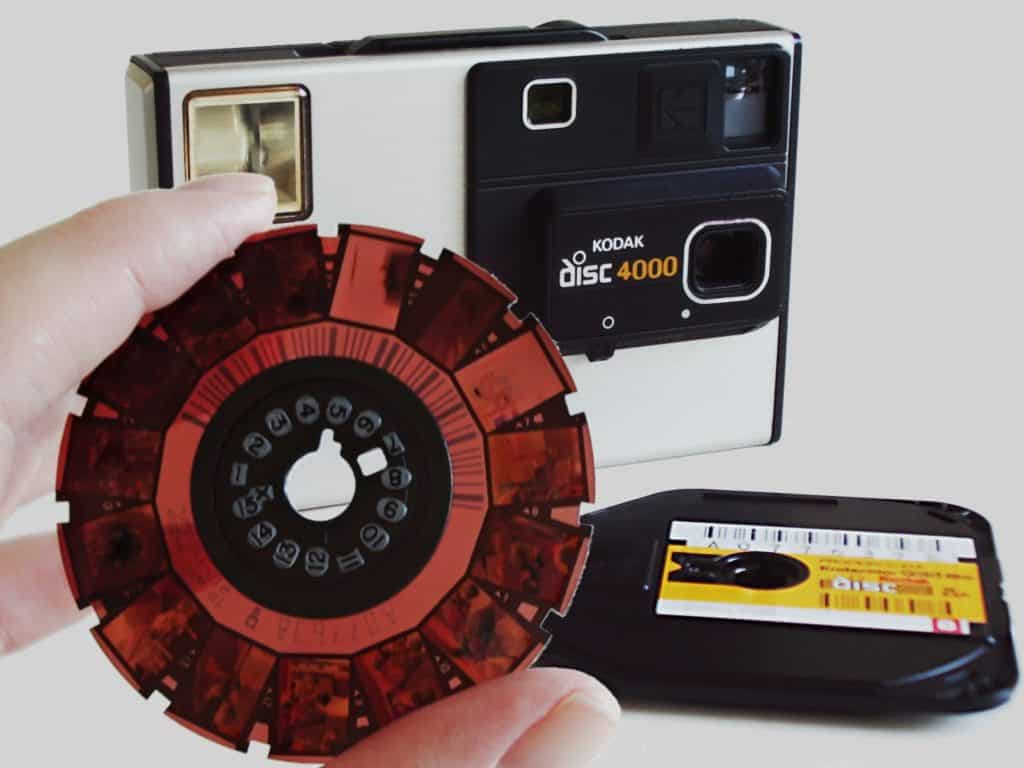
Little did he know that this would be only the first of at least 12 different cameras to date, alongside some 5,000 odd image sensors (but who’s counting?). Since his childhood in Chicago, Martin has watched the creation of the first digital camera and the rapid acceleration of the technology behind it, allowing him to carve a niche and become a world-renowned expert in a field which hadn’t existed before he created it.
The road to 360° photography
However, contrary to what you might have thought, Martin did not study film or photography at university, instead settling on English. But he fed his passion for both by taking several classes throughout his studies, as well as always having his hand in anything at the cross section of computers and photography. Eventually, upon graduating from university, Martin worked in the film industry in New York, both onset and in the editing room.
Ever the adventure-seeker, Martin found himself relocating to Prague in his early twenties, a few years before it gained its international fame for its architecture and history. He had felt compelled to move there due to the incredible amount of praise the city had received from anyone who had been there. He was not disappointed and Prague soon became a source of inspiration and motivation for his future career in photography.
It was in Prague that he got his first gig as a photographer for the Prague Business Journal in 2002. It was “in the last days of shooting on film,” Martin describes the frantic days of shooting several rolls of film during the day, rushing to develop the film in a photo lab and then returning to the office to scan the images online for the newspaper.
Martin remembers one of his last experiences developing a roll of film and thinking, “this is horrifying” at all of the time and money he had wasted in the past for a roll of 36 images, of which only 3 or 4 he found “good enough.”
When asked if he misses film, a subject that causes many photographers to become nostalgic for the ‘good-ole’ days’ Martin quickly replies, “No, not at all.” When digital cameras emerged, Jeffrey immediately took to this new technology, which he found superior to analog photography.
“There’s no technical aspect of analog photography that for me that I find to be superior… I’ve always loved with digital photography how it extends what is possible to do with photography. That is, since the beginning, since I first picked up a digital camera, that was an immediate attraction to me…It’s malleable. … you can take 2 pictures that overlap a little bit and join them together into one seamless photograph… and I’ve always been fascinated by that.”
Martin was able to obtain a now non-existent software, RealViz Stitcher, which allowed for the creation of panoramic photos, which he claims was “fairly sophisticated software” for the time. This, plus his acquisition of his first digital camera and he began to explore into the world of panoramic or 360° photography.
His first digital camera had its own primitive panoramic shooting mode in the camera but the software was robust and allowed overlapping photos which allowed one to create a fully spherical image. “It was very addictive to do this… it was just something I discovered and started to do it obsessively.”
Martin realized the usefulness of 360° imaging and eventually, within just two years of getting started in the field, he had already discovered and helped build an online community– shooting virtual tours of real estate, restaurants, stores, bars and more. However, just as quickly, he discovered the pain points involved with the labor: the field was obscure, photos were difficult to create and even more difficult to show online, causing a lot of friction for those creating the photos and those wishing to experience the photos.
Martin’s first endeavor at entrepreneurship occurred when he combined his reverence for the beauty of Prague and his obsession with 360-degree photography to create prague360 with the idea of promoting the city of Prague through a city guide, documented with 360° photos of landmarks, tourist attractions, and local businesses. By this time he had upgraded his gear which made things a bit easier, but not by much.

However, the difficulties in shooting and sharing pictures did not deter him and he pushed through all of this to launch the new website. What did eventually bring an end to the monetization of Prague360 was his self-proclaimed naivety in thinking that, “we could launch this thing and it would sort of sell itself.” As any entrepreneur can tell you, this is not the case for most products and eventually the business end of the website declined. A rookie mistake, but one which he would learn from in the future.
Nonetheless, his foresight into the need for spherical and 3D images was certainly on the right path. Within another year or so, Google Maps and Street View came into existenceand the map and 360° photos of Prague turned out to be useful for other photographers who were doing similar work and who faced similar difficulties publishing their work online.
Martin was able to easily, “clone what we had built [in Prague360] for other people for other photographers… turned into a global scale project.” The new website, 360cities.com launched, received investment, and is still operating today as one of the leading websites of 360 photographers in the whole world. The business structure shifted and the site was able to draw in profits by licensing a growing database of high quality images to licensed ad agencies, newspapers, and online news.
The largest gigapixel photos in the world
Through it all, Martin admits he was ‘obsessively shooting overlapping photos’ with updated cameras and by then he had already seen the benefit of having a much wider lens and taking fewer photos in order to create a spherical image. Yet his pioneering spirit led him to the other extreme and he began to think to himself,
“how about if you put on an even longer lens and take hundreds of photos and you join those together and then you get this ridiculous high resolution picture that’s way more resolution than is otherwise possible to do with any other camera.”
And so began his journey to discovering how to shoot the largest and highest definition photos in the world. Having the advantage of living and working in Prague which offers great views and lots of great vantage points, Martin practiced creating gigapixel photos. Fifteen years ago, gigapixels (a thousand megapixels) photos required hundreds of pictures, but now it takes much less.
In his spare time, he managed to shoot a few images that were (at one point) the world’s largest images, even earning him a place in the Guinness Book of World Records. The 18-gigapixel image of Prague TV Tower and the 320-gigapixel image of London BT Tower would soon make him a trailblazer in the industry.
Martin still makes a couple of gigapixel images each year, some commissioned and some just for the sheer enjoyment of it, however the process is quite difficult and extremely time consuming. While the actual shooting may only take one or two days, the processing of the image set takes anywhere from one to two months.
New horizons for Jeffrey Martin Mosaic CEO: From software to hardware
In 2012 Martin began to experiment with creating his own camera hardware in order to bring to life the ideas that had been spinning inside his head. The idea of 360° video had sparked his interest but there was nothing on the market at that point that could do the trick, so he began “cobbling together some off-the-shelf CCTV cameras.”
Eventually he found some partners which allowed for the development of more complex 360 degree videos. The company, Sphericam as it was later named, joined Kickstarter in 2012 and 2015, raising $25,000 and $500,000 respectively. It was involved in building prosumer grade 360-degree cameras for virtual reality. The product and the company garnered much attention during those years and was praised for the ability to live stitch at 30 frames/second in real-time, 4k 60fps raw, its ease in usability, and robust structure and body frame.
While Sphericam did not reach the necessary number of cameras for mass production which was imperative to continue and concluded business in 2017, there was a lot that Martin took away from this venture.The business experience, the manufacturing processes, and the understanding of what specifications made a useable camera would eventually shape his next adventure. He would later meld the knowledge from his exploits and go on to create the next generation in a new industry, 360° mapping and imaging.
What NEEDED to be included? Seeking innovation in the details
When asked what he thought was specifications were most necessary to include in a 360° camera for mapping, Martin responded with, “It’s a bunch of little things and a couple of bigger things.” He had noticed over the years that many in the 3D and 360 photography and videography fields were, “abusing cameras which weren’t designed for this purpose….wrong tool for the job.”
Taking inspiration from Sphericam and its robust design, he sought to build a camera which was protected in a number of ways, from the elements such as rain and heat, as well as from hazardous road conditions which could lead to scratched lenses.
Another mission of his was to create a single storage device which was removable. Other cameras in this market either have one memory card for each image sensor, which later need to be spliced together or have to connect to a computer in the car in order to do the splicing in real time. Martin wanted to make a camera that could do all of that, in real time, in one (one total, not per lens) single storage disc which was easily removed from the camera.
‘When you add them all up together, either you have a device which is easy, convenient and pleasant to use or a device that makes you want to pull your hair out. We tried to make something that is a pleasure to use.”
And of course, it is a camera, so it must produce great images, accordingly resolution was also top on the list of specs that needed to be the best-in-class. Martin set out to create a camera which offered the best HD quality images while remaining cost effective for him and his customers.
Building on each of these ideas, Martin and his team of advanced engineers and designers created the Mosaic 51, a 360 video camera which is “one of the highest resolution in the world,” at 12K- resolution, offers extreme durability, consumer usability and top of the line AI.
Target audience: Who needs a 360-degree camera anyway?
Currently Mosaic is working with several different markets, There are governments, municipalities, and companies across the globe which are seeking to create better maps of cities for infrastructure inspecting (detecting cracks in road, condition of various telephone poles, cables, wiring, inventory of street signs, location of street signs) as well as for traffic control and logistic management.
There is another market which they hope to break into, which includes companies working in surveying, who are making a complete 3D model of an area for future development.
At this time, many of these companies and governments are using one of several 360 degree mapping cameras, which all have their shortcomings. The Ladybug 5 is a popular camera, but is much lower in resolution at only 8K-resolution. NCTech is missing many of the durability factors that Mosaic 51 possesses, and the Insta360 was built for VR cinema and offers none of the AI or LIDAR technology that is a part of the Mosaic 51.
Most of the current solutions in 360-degree imaging do not include software, and the customer has been forced to build their own homegrown solutions or use open services such as Open Street Map, Mapbox, or ArcGIS.
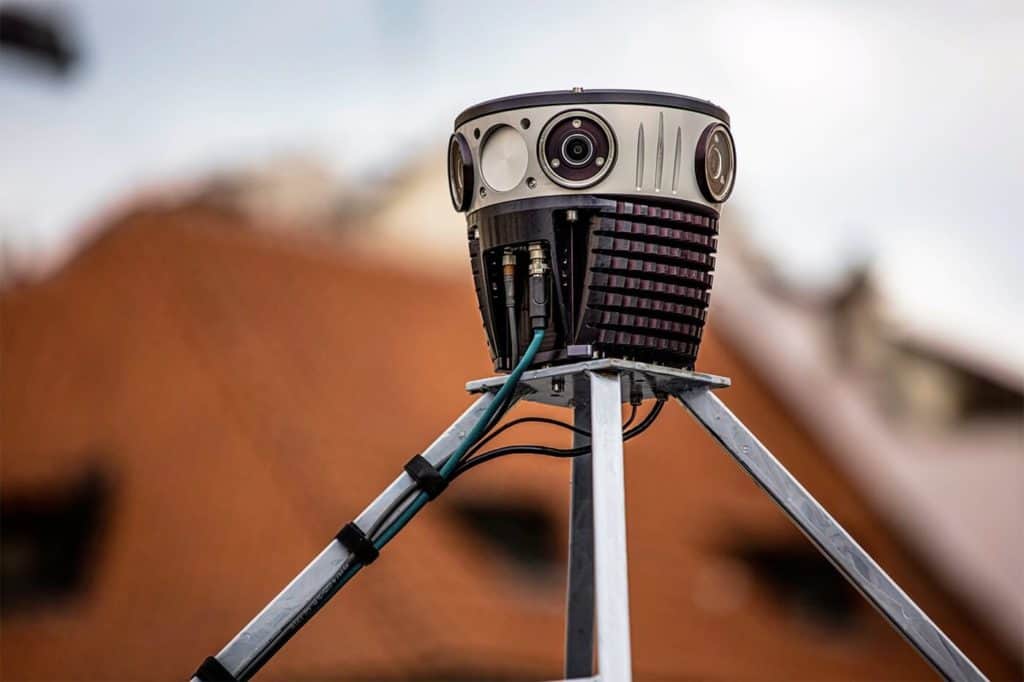
The response to the creation and launch of the Mosaic 51 has been very positive. There is a great deal of enthusiasm about trying out the camera, “we seem to be solving quite a few of their problems or what has been frustrating them in terms of image quality and usability and so on.”
Current sales: Top tech companies are the first to bite
The very first customers to sign on and purchase several Mosaic 51 cameras were tech giants who have been in the 3D mapping industry since its inception. Google, Mapillary, and Facebook are just the first among many customers to come for Martin and Mosaic. He is currently in talks with companies and governments from around the world who are itching to get their hands on this new technologically groundbreaking invention.
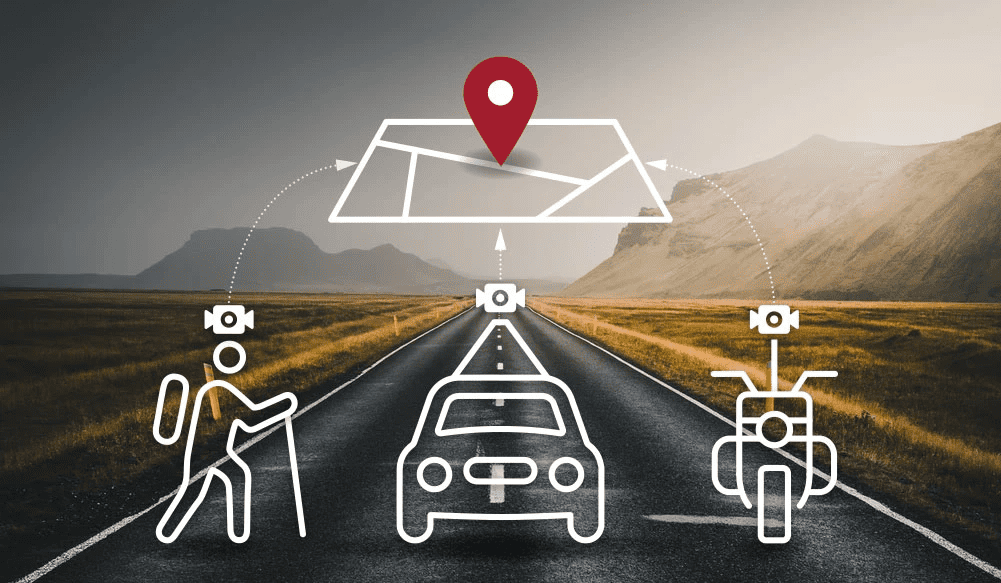
Team: Find someone who’s better (than yourself)
The Mosaic team is a collection of some of Martin’s best and brightest colleagues from previous ventures, with whom he’s collaborated on over the years. He believes that you should surround yourself with people who are better than even yourself in different roles. Martin asserts that one of the most important things in the company for him is acknowledging that, “when the list of tasks outgrows what they [the founder] are capable of doing, they have to find someone who’s better than them.” And so he has compiled an impressive group of experts in various fields of hardware design, software design, manufacturing, and business development.
The core team of designers and engineers is led by Rostislav Lisovy, the VP of Engineering and one of the cofounders, Daniel Rozsnyó – Lead Hardware design, and Martin Konecny, Mechanical Engineer, while Jost Faganel, the Cofounder and COO, leads the development and global launch of the company.
Martin (Jeffrey, not Konecny) speaks highly of all of his colleagues and it is evident that he has faith in his selection of a team that will help launch Mosaic to the forefront in 360º imaging, VR, and camera development.
Rozsnyó is, “one of best engineers I know in terms of camera design,” while Lisovy has been a rare discovery, “finding this combination in one person is very difficult to find” and Martin is one of those, “multi talented people who has an extremely broad understanding of great many fields… makes his actual tasks very well informed.”
His illustration of Faganel is one of the utmost respect, he “not only likes to do but is very good at it, any of those tasks… whatever I’ve done before he’s doing better.”
Vision for 360 mapping and the future of Mosaic
Mosaic currently declares a ‘passion about documenting the world’ and so when posed with the question about his vision for 360º imaging and mapping, Martin explains his reasoning behind why he believes that 360-degree imaging is so important for the world today.
Safety is his number one priority. “Cars should drive themselves, we have proved ourselves fairly unreliable at this,” he states in a matter-of-fact way. He believes that, “automating things humans aren’t good at or don’t want to do, is important.”
His other motivation for developing such a product has to do with the efficiency it offers. The Mosaic 51 will allow customers to identify potholes, the deterioration of infrastructure, a missing street sign and so much more, and in much higher capacity and accuracy than humans.
When asked where Martin sees Mosaic going in the next few years, he replies, “It’s hard to say… we’ve built a compelling product that people want,” which is evident of the current customer list that Mosaic can claim.
“The golden age of streaming computers to sense the world and creating novel applications from that. And cameras are a central part of that and it will be interesting to ride that wave… it’s an exciting aspect of technology right now.”
Share Jeff’s incredible story on
Facebook, Twitter, LinkedIn
or wherever you want.

